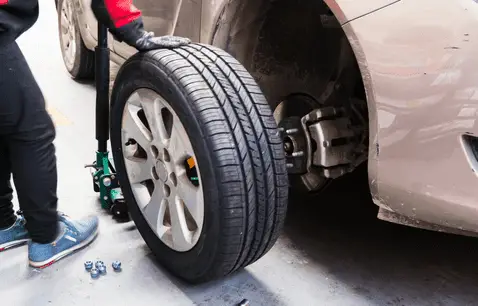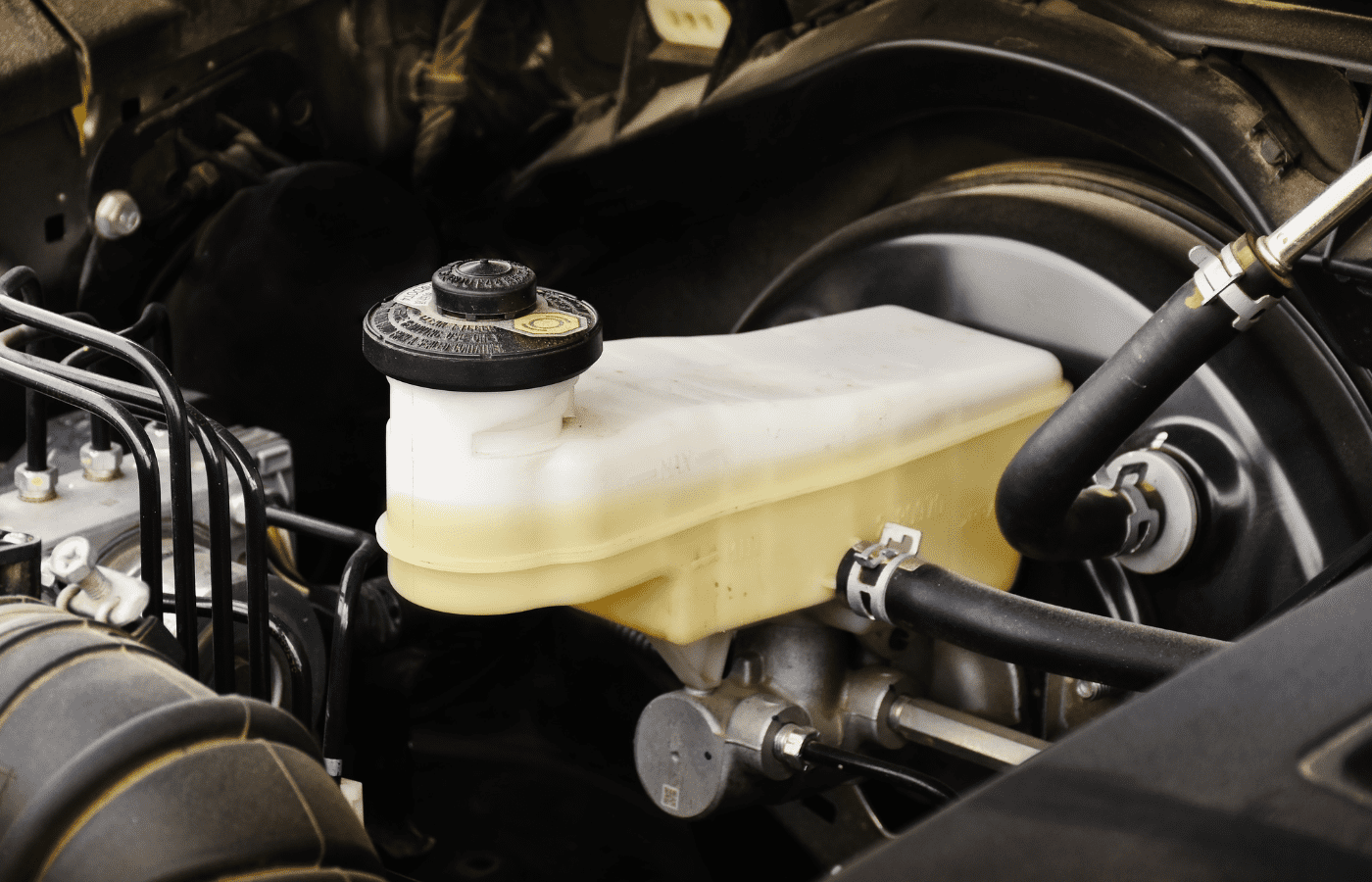Will brake fluid eat rubber? Brake fluid contains reactive elements that might react with other substances, but will not eat rubber. When the brake fluid comes into touch with the rubber components of the automobile, there is no response of any type, and it is entirely safe.
Expert research and technological development guarantee that, occasionally, superior products hit the market. This is true for the various kinds of rubber and brake fluid on the market today. The type of rubber and the particular brake fluid may affect how the braking fluid reacts.
Natural rubber makes up the majority of older rubber vehicle components. The hydrocarbon chain has undergone different alterations, including another ingredient, to create a better kind of synthetic rubber.
Will Brake Fluid Eat Rubber?
It is doubtful that your brake fluid will eat rubber components on your car. If you find a leak or other damage to the rubber, it’s likely from a different source.
There have been incidents of rubber components expanding due to brake fluid. These instances, nevertheless, do not represent the braking fluid’s typical properties because things like this don’t just happen.
However, you don’t need to be familiar with all brake fluid varieties to understand that they’re safe for rubber materials and haven’t been demonstrated to harm rubber when used commonly.
Be aware that this only applies in typical circumstances. The same is not guaranteed due to the brake fluid’s deteriorating state. A rise in copper content and other impurities is seen as the additive package gets smaller, indicating an intensifying corrosion activity.
To check the current price and availability of Brake Fluid, click here to view the selection on Amazon.
What Rubber is Resistant to Brake Fluid?
A distinct sort of rubber is used to make each rubber component of the automobile. Plastic parts can occasionally be mistaken for rubber ones. Brake fluid and plastic interact differently than rubber. In these two situations, it is inactive, whereas the former aggressively discolors.
The only adjustments made at the hydrocarbon chain level separate regular rubber from synthetic rubber, resulting in a more stable, robust, and compatible material with braking fluid.
However, if the brake fluid is in excellent condition, both types of rubber may be freely used as seals in the braking system and are not affected by it.
As absurd as it might seem, there was a period when it was thought that brake fluid had ingredients helpful in treating skin disorders like eczema. Others have asserted that it has a calming impact on the skin and is thus beneficial as first aid for treating burn wounds.
While every medical institution indeed frowns upon its usage on the skin during any of the situations above and does not support it, using it as a cleaning product for tires could not face the same level of opposition.
But it doesn’t consume the rubber or make it swell in any way that would be harmful to the rubber.
Does Brake Fluid Swell Rubber?
There have been incidents of rubber components expanding due to brake fluid. These instances, nevertheless, do not represent the braking fluid’s typical properties because things like this don’t just happen.
Cracks, swells, and other problems in the rubber can be brought on by brake fluid with a modified PH, corrosive pollution, and removal of the additive material.
Follow the manufacturer’s recommendations; some people have claimed that using a different type of brake fluid contributed to their negative experiences.
Brake fluid should not be substituted with steering fluid. They are not made of the same materials as rubber or other materials and do not respond in the same ways.
Will Brake Fluid Eat Tires?

Other than a tiny discoloration, brake fluid does not hurt tires in any way.
Brake fluid comes into touch with tires more often than you may think. This happens when the fluid spills or is sprayed to polish something. Although it might not hurt the tires, the dirt it gathers over time will make them less appealing.
The additive chemical preservatives prevents the brake fluid from eroding brake components, as many brake components contain rubber hoses and seals.
Similar effects will result from applying brake fluid to the tire in this condition. However, applying brake fluid to tires should be avoided since the supposed advantages of providing the tire with a glossy appearance are outweighed by disadvantages.
Stick to using over the counter tire shine products instead of brake fluid as brake fluid can and will eat the paint of your car. This is especially true if you are driving your car while brake fluid is still wet on your tires.
Does Brake Fluid Swell Seals?
Over time, DOT brake fluid will cause the seals and inner face of the brake hoses to expand and deteriorate. Broken brake lines also can restrict the flow of fluid, which keeps the piston from returning. To lessen its impact on the brake lines and seals, you should swap out your DOT brake fluid annually.
Most rubber seals are developed to function with synthetic braking fluid (DOT 3, DOT 4, DOT 5). They get polluted and swell if they come into touch with any other type of mineral oil, like lubricating oil, WD-40, paraffin, engine degreaser, or something similar.
What O-rings are Compatible with Brake Fluid?
Steam, water, silicone lubricants, braking fluids, alcohols, and caustic Skydrol hydraulic fluid can all be used with Ethylene Propylene Rubber (EPR) O-rings. It is well known that this material has excellent heat and compression resistance.
Because of wear and tear concerns, EPR is not ideal for various applications, much like nitrile. EPR O-rings are often employed in the aircraft sector in hydraulic pumps.
Final Thoughts
Brake fluid’s chemical makeup includes reactive components that might interact with other chemicals. There is no reaction of any kind, and the contact between the braking fluid and the rubber parts of the car is completely safe.
Technology advancement and expert research ensure that, occasionally, special items reach the market. The numerous types of rubber and braking fluid available today are examples of this. The specific brake fluid and kind of rubber may impact how the braking fluid responds.
Most older rubber car parts are made of natural rubber. To produce a particular type of synthetic rubber, the hydrocarbon chain has experienced many changes over time, including adding another component.


